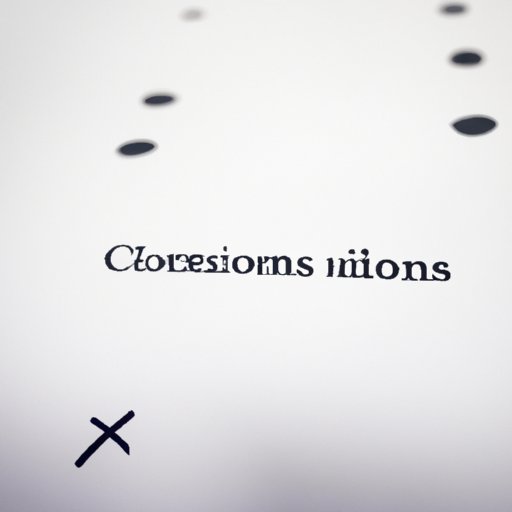
Introduction
Do you get confused about when to use a comma or a period to join two related sentences? Have you ever heard of a semicolon? If not, don’t worry! This article will guide you through how to use semicolons correctly and effectively.
A Beginner’s Guide to Using the Semicolon
A semicolon is a punctuation mark (;) that is used to connect two related independent clauses. It is less strong than a period but stronger than a comma, making it a useful tool in elevating your writing. For instance, instead of a comma, you can use a semicolon to separate two related thoughts that would otherwise be confusing.
Here’s an example: “I am going to the movies, but I forgot my wallet.” By using a semicolon to replace the comma, the sentence reads smoothly: “I am going to the movies; I forgot my wallet.”
Using semicolons adds variety to longer, more complex sentences and enhances their readability for readers.
Mastering the Semicolon
To improve the flow of your sentences, you can use semicolons to join two independent clauses where the ideas relate to one another.
For example: “Mary loves painting; she has been studying art for years.” In this instance, the semicolon separates two independent clauses related to Mary’s passion for painting.
However, avoid using semicolons to connect unrelated ideas, as this can lead to confusion for readers.
Breaking Down the Semicolon
You can also use semicolons in place of commas or conjunctions. For instance:
“I went to the store; I bought milk, bread, and eggs.” This sentence could have been written as “I went to the store, and I bought milk, bread, and eggs,” but the semicolon helps to reduce the use of conjunctions and improve the writing flow.
You can also use semicolons in lists that include internal punctuation. For example:
“We traveled to Paris, France; Barcelona, Spain; and Berlin, Germany.”
Semicolons vs. Periods
Although period is the most popular punctuation mark used to join two complete sentences, in some instances, semicolons can be appropriate as well. If two ideas are closely related and have equal importance, you can use the semicolon to separate them instead of a period. For example, “She lost her keys; she had a terrible day.”
Common Semicolon Mistakes to Avoid
To use semicolons effectively, avoid these common errors:
- Avoid using semicolons to connect phrases or dependent clauses
- Avoid connecting unrelated sentences with semicolons
- Do not skip conjunctions when you are supposed to use them
Semicolons in Real-Life Writing
Semicolons are commonly used in literature and journalism to connect complex sentences and improve readability. For instance, in E.B. White’s “Charlotte’s Web,” the author uses semicolons frequently to join related clauses together:
“Wilbur was three days old when he heard that the farmer was going to kill him; and he screamed shrilly, ‘I don’t want to die!'”
In journalism, semicolons are often used to link phrases in a series or to separate items that have internal punctuation. For example:
“The winner of the competition will have the opportunity to travel to Beijing, China; Rio de Janeiro, Brazil; and Buenos Aires, Argentina.”
Conclusion
Using semicolons can enhance your writing’s flow and readability when used correctly. Remember to use semicolons to join related independent clauses, replace conjunctions or commas, and in lists with internal punctuation. It is crucial to avoid pitfalls such as connecting unrelated ideas with semicolons and skipping conjunctions when you should be using them.
Giving care and attention to your writing’s punctuation will reap many rewards in improving sentence structure and delivering your message to readers effectively.




